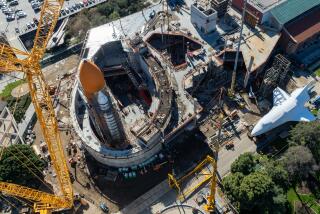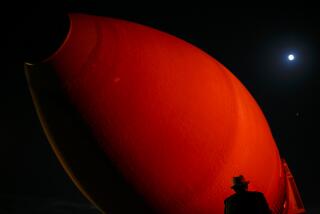11 Experiments Slated for Shuttle to Include 2 Lost on Challenger
- Share via
KENNEDY SPACE CENTER, Fla. — The next shuttle flight in June, 1988, will feature 11 experiments, including reflights of two student projects that were destroyed in the Challenger explosion, NASA announced Tuesday.
Discovery is tentatively scheduled to blast off on June 2, 1988. The five-man crew’s primary goal is to launch a $100-million NASA communications satellite identical to one destroyed aboard Challenger last year.
‘Good Experiments’
The two student experiments will be on board during the four-day mission as part of NASA’s ongoing Space Shuttle Student Involvement Program, designed to encourage high school and college students to pursue careers in science.
Both were included with Challenger’s payload last year, and NASA spokesman Ed Campion said they were selected for reflight aboard Discovery because “they are good experiments.”
Lloyd Bruce, now a student at the University of Missouri, designed an experiment sponsored by McDonnell Douglas Astronautics Co. that involves heating titanium filaments to study the effects of weightlessness on the metal’s molecular structure.
S. Richard Cavoli, a student at Union College in Schenectady, N.Y., built an experiment to study control of crystal growth in the absence of gravity using a semi-permeable membrane.
In an ongoing commercial program, 3M Corp. will supply a research experiment in materials science. Other National Aeronautics and Space Administration experiments will be dedicated to materials research, protein crystal growth, infrared communications and biology.
In addition, television and photography by the crew will be used to help researchers determine the correlation between large-scale lightning phenomena and severe storms.






